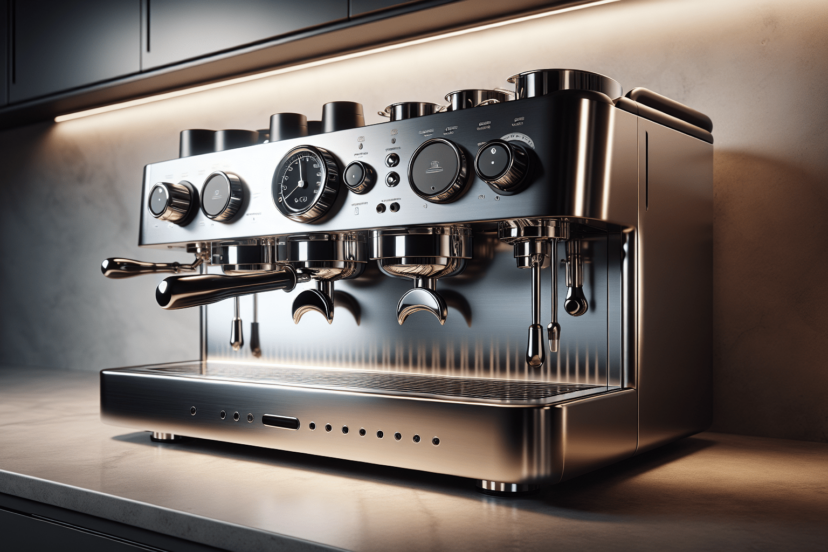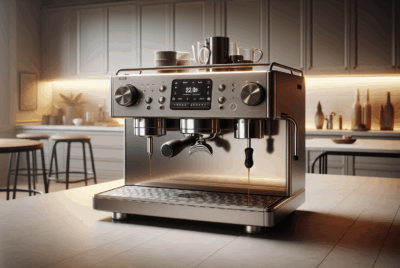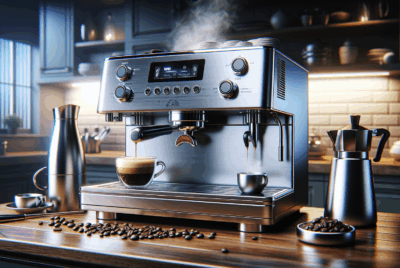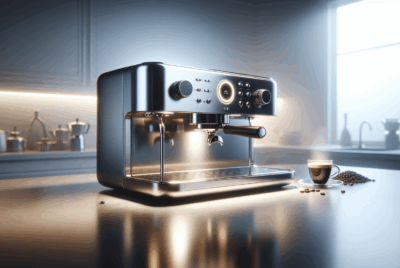The Ultimate Guide to the Only 15 Bar Espresso Machine
As an Amazon Associate, I earn from qualifying purchases, at no additional cost to you. Disclaimer
Have you ever thought about the importance of pressure in making the perfect espresso shot? So many of us espresso enthusiasts are on a quest to find the best machine that gives us that strong, aromatic, and creamy experience right at our kitchen countertop. For those digging deeper into the world of home espresso making, you’ll encounter discussions about the “15 bar espresso machine.” But what does it truly mean, and why is it so special?
Explore the Best Espresso Machines
Understanding Bar Pressure in Espresso Machines
Before diving into why a 15 bar espresso machine might be the Holy Grail for some coffee aficionados, it’s essential to understand the concept of “bar pressure.” In the context of espresso machines, “bar” is a unit of pressure measurement. One bar is roughly equivalent to the atmospheric pressure at sea level. Imagine the force needed to push water through finely-ground coffee to extract that rich, concentrated liquid gold we call espresso. Typically, a well-executed espresso shot requires about 9 bars of pressure. However, many machines feature 15 bars, aiming to ensure a robust pressure capability for top-tier extraction.
Why a 15 Bar Espresso Machine?
The Science Behind Pressure Levels
Having a machine that can hit 15 bars sounds compelling, right? However, the goal is not to brew coffee at 15 bars but to ensure that the machine can consistently apply enough pressure (usually around 9 bars) during the extraction process. The extra capacity provides a buffer, ensuring that even if the machine wears a bit over time, it can still perform effectively.
Stability and Consistency in Brewing
One of the main advantages of a 15 bar machine is its potential for delivering stable and consistent pressure over time. When brewing espresso, one of the challenges is maintaining that crucial pressure consistently across multiple shots. A machine with a higher pressure capability can sandwich more advanced technologies to maintain those steady pressures through wear and tear.
Home Brewing Perfection
For those who love crafting espresso at home, a 15 bar machine can give you more control over your coffee. It allows for experimenting with different grinds, beans, and espresso strengths, offering versatility in your morning ritual or afternoon pick-me-up. The enhanced pressure capacity can lead to better flavor extraction and crema formation, which is that lovely, creamy froth that sits atop a well-brewed shot.
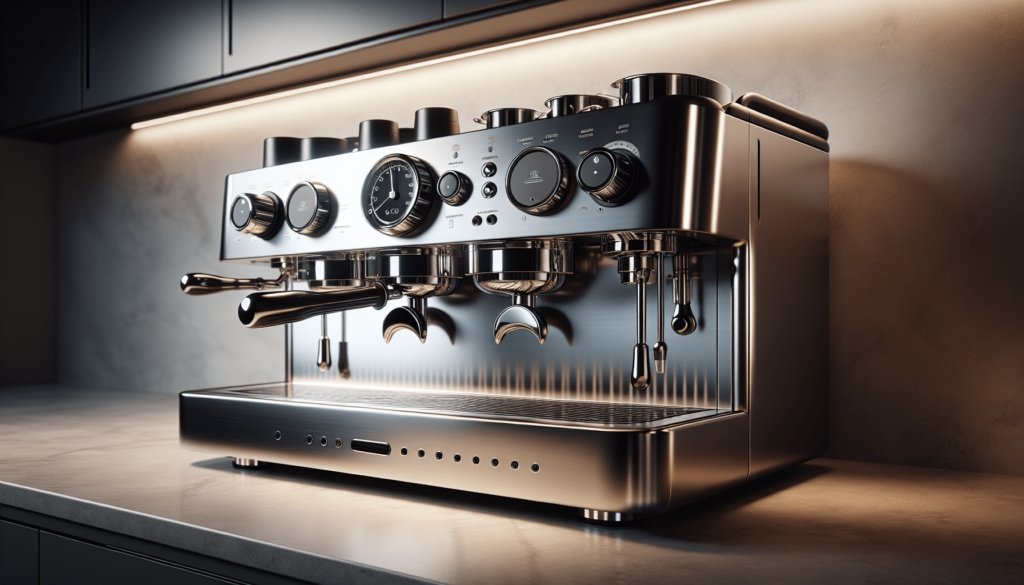
Features to Consider in a 15 Bar Espresso Machine
When searching for the perfect 15 bar espresso machine, you’ll want to look for features that enhance your brewing experience without complicating it unnecessarily.
Types of Espresso Machines
Understanding the different types of espresso machines is essential. Typically, they are divided into four categories: manual, semi-automatic, automatic, and super-automatic. Depending on your skill level and time commitment, a semi-automatic might offer the hands-on control you desire, while a super-automatic streamlines the entire process, from bean grinding to milk frothing.
Built-In Grinder and Hopper
A machine with a built-in grinder ensures freshly ground beans, thus enhancing flavor. The proximity of grinding to brewing can noticeably improve the taste of your espresso. A built-in hopper also adds convenience by storing your beans in the machine until you’re ready to grind.
Boiler Type
The type of boiler can affect the machine’s performance, particularly in terms of how quickly it heats up and maintains heat for brewing and steaming milk. Look for a machine with a thermal block or dual boiler for rapid heating and consistent temperatures.
Durability and Maintenance
A sturdy machine made from quality materials can provide years of excellent service. Stainless steel bodies are reliable and often easy to clean. Consider the ease of descaling and maintenance, which will help keep your machine in peak condition.
User Interface
A user-friendly interface makes a significant difference when it comes to your daily brewing ritual. Look for intuitive controls, such as programmable settings for espresso strength and water temperature. A clear display or indicator lights can guide you effortlessly through each brewing step.
Extracting the Perfect Espresso Shot
Once you have your 15 bar espresso machine set up, it’s time to refine your technique to perfect your espresso shots.
Grind Size and Consistency
The grind size is crucial for espresso. It should be fine, almost like powdered sugar. Inconsistent grinds could lead to poor extraction, resulting in either sour or bitter flavors. Invest in a good burr grinder and take the time to dial in the optimal grind size for your coffee preference.
Proper Tamping Technique
Tamping creates uniformity in the coffee bed, aiding in even water distribution. Apply even pressure to compress the grounds, ensuring a snug fit within the portafilter. A tamping mat and a quality tamper can provide stability and improve your tamping consistency.
Water Temperature
The right water temperature is fundamental to good espresso. It should be around 195-205 degrees Fahrenheit. Too hot, you’ll burn the grounds, too cool, and you’ll under-extract them, leading to weak espresso.
Timing Your Shot
Aim for a shot time of about 25-30 seconds. If it’s any shorter or longer, you might need to adjust your grind size or tamping pressure. These small adjustments can significantly impact the quality of your espresso.
Observing Your Crema
A rich, thick crema is a hallmark of a well-pulled shot of espresso. It’s a sign of fresh beans and proper extraction. If your crema is too thin or absent, consider revisiting your grind, tamp, or machine settings.
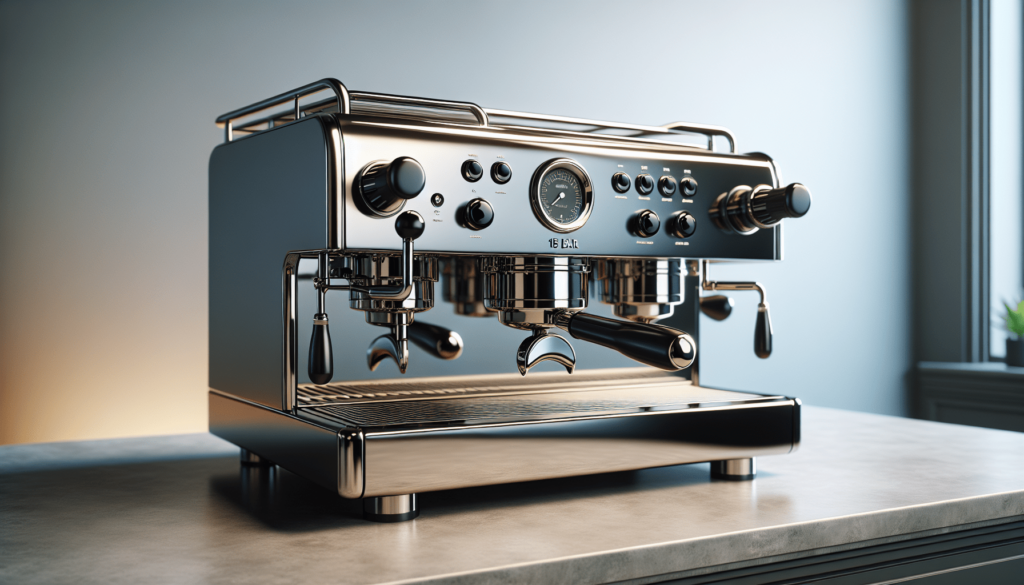
Exploring Popular 15 Bar Espresso Machines on the Market
While there are countless options available, some models stand out, offering reliability and exceptional performance.
| Brand | Model | Features | Price Range |
|---|---|---|---|
| De’Longhi | EC155 | Semi-automatic, swivel jet frother | $90-$120 |
| Breville | BES870XL Barista Express | Built-in grinder, stainless steel, programmable settings | $600-$700 |
| Gaggia | Classic Pro | Stainless steel body, commercial steam wand | $400-$450 |
| Mr. Coffee | Café Barista | One-touch controls, milk frother | $200-$250 |
De’Longhi EC155
This model is praised for its simplicity and affordability, making it an excellent entry-level choice. Despite its lower price point, it provides impressive performance with its dual thermostats and swivel jet frother.
Breville BES870XL Barista Express
A favorite among serious home baristas, this machine combines a grinder and brewer into one sleek unit. It’s equipped with features like a conical burr grinder and digital temperature control to ensure optimal extraction.
Gaggia Classic Pro
Renowned for its durability, this machine is often recommended for those who want a commercial-grade experience at home. It features a powerful pump and a commercial steam wand for perfect milk texturing.
Mr. Coffee Café Barista
This budget-friendly option is perfect for those who prefer ease and convenience. Its one-touch controls streamline the process, and the automatic milk frother simplifies frothing.
Troubleshooting Common Issues
Even with the best machines, issues can arise. Here’s a quick guide to troubleshooting some common problems:
Bitter Espresso
The bitterness could be due to over-extraction. Consider using a coarser grind, reducing your tamping pressure, or ensuring correct water temperature.
Sour Espresso
Sourness typically results from under-extraction. Try using a finer grind, applying more tamping pressure, or checking your shot timing.
Weak Crema
If your espresso lacks crema, it might be due to old beans or low-extraction pressure. Use fresh beans, and make sure your machine maintains proper pressure.
Inconsistent Pressure
Check for blockages in the portafilter or group head and ensure your machine is regularly descaled and cleaned to maintain optimal pressure.
Maintaining Your Espresso Machine
Proper maintenance of your 15 bar espresso machine is crucial for consistent performance and longevity.
Regular Cleaning
Daily cleaning should include wiping down the steam wand and brushing out leftover grounds from the portafilter. A more thorough clean, involving descaling and backflushing, should be done monthly or as directed by the manufacturer.
Descaling
Over time, mineral deposits, or scale, can build up within the machine, impacting its performance. Use a descaling solution routinely to remove these deposits and keep the machine’s internal components in prime working condition.
Replacing Gaskets and Seals
Regular use can wear down gaskets and seals, leading to leaks or pressure issues. Checking and replacing these parts annually or as needed ensures that your espresso machine operates smoothly.
Is a 15 Bar Espresso Machine Right for You?
Ultimately, whether a 15 bar espresso machine is right for you depends on your coffee habits, space, and budget. If you love experimenting with different espresso styles and value a robust, versatile machine, it could be an excellent investment. It’s about finding a machine that fits seamlessly into your lifestyle while delivering the rich, satisfying espresso you crave.
No matter your choice, the journey to mastering the art of coffee at home is just as rewarding as the espresso itself. Happy brewing, and may you always find joy in every cup!

